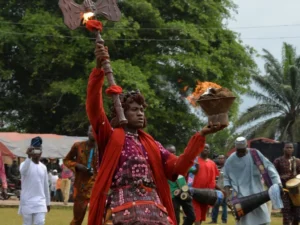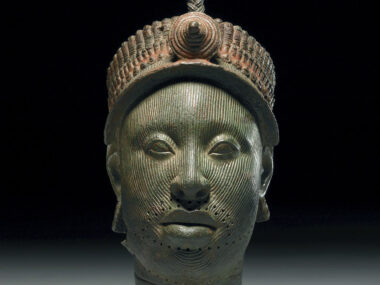Introduction
Traditional festivals are integral to the cultural and social life of many communities around the world. These celebrations, often rooted in historical, religious, or cultural traditions, serve to reinforce community bonds, preserve heritage, and provide a sense of identity. Exploring various traditional festivals offers a window into the diverse practices and values of different cultures. This exploration covers a range of festivals from different continents, highlighting their origins, significance, and unique customs.
African Traditional Festivals
- Durbar Festival (Nigeria): The Durbar Festival, celebrated mainly in northern Nigeria, marks the end of Ramadan and other significant events. It involves a grand procession of horsemen, music, dance, and displays of traditional attire, showcasing the rich cultural heritage of the Hausa-Fulani people.
- Ouidah Voodoo Festival (Benin): Held annually on January 10th, this festival celebrates the voodoo religion, which is an official religion in Benin. It includes ceremonies, rituals, and offerings to various deities, reflecting the deep spiritual and cultural roots of voodoo in West Africa.
- Timkat (Ethiopia): Timkat, the Ethiopian Orthodox celebration of Epiphany, commemorates the baptism of Jesus in the Jordan River. The festival features processions, the blessing of water, and vibrant displays of faith, drawing large crowds of believers.
- Fête du Vodoun (Benin): This festival honors the spirits and ancestors of the voodoo religion. Participants engage in music, dance, and rituals that demonstrate the syncretism between traditional beliefs and modern practices.
Asian Traditional Festivals
- Diwali (India): Diwali, the Festival of Lights, is one of the most significant Hindu festivals, celebrated with great enthusiasm across India. It symbolizes the victory of light over darkness and good over evil. The festival involves lighting oil lamps, fireworks, feasting, and exchanging gifts.
- Chinese New Year (China): Also known as the Spring Festival, Chinese New Year is a major holiday celebrated with family reunions, feasts, and various customs aimed at bringing good luck for the coming year. The festival includes lion dances, dragon parades, and the lighting of red lanterns.
- Songkran (Thailand): Songkran, the Thai New Year, is celebrated in April with water fights and the cleansing of Buddha statues. It is a time for family gatherings, temple visits, and paying respects to elders.
- Obon (Japan): Obon is a Buddhist festival honoring deceased ancestors. It involves family reunions, cleaning graves, and offering food. The festival also features traditional dances called Bon Odori, lanterns, and fireworks.
European Traditional Festivals
- Carnival of Venice (Italy): The Carnival of Venice is renowned for its elaborate masks and costumes. Held in the weeks leading up to Lent, it includes parades, masquerade balls, music, and performances, capturing the city’s rich history and artistic heritage.
- Oktoberfest (Germany): Originating in Munich, Oktoberfest is the world’s largest beer festival. It features beer tents, traditional Bavarian music, food, and attire. The festival attracts millions of visitors, celebrating German culture and hospitality.
- La Tomatina (Spain): Held in the town of Buñol, La Tomatina is a unique festival where participants engage in a massive tomato fight. It is a fun, messy event that draws tourists from around the globe, symbolizing communal joy and togetherness.
- Bastille Day (France): Bastille Day, celebrated on July 14th, marks the anniversary of the French Revolution. It includes military parades, fireworks, concerts, and parties, reflecting French national pride and revolutionary spirit.
American Traditional Festivals
- Mardi Gras (USA): Mardi Gras, particularly famous in New Orleans, is a vibrant celebration leading up to Lent. It features parades, masked balls, music, and the throwing of beads and trinkets, showcasing the city’s rich cultural and historical heritage.
- Dia de los Muertos (Mexico): Dia de los Muertos, or Day of the Dead, is a festival honoring deceased loved ones. It involves the creation of altars, offerings of food and flowers, and elaborate face painting, blending indigenous traditions with Catholic influences.
- Carnival (Brazil): Brazil’s Carnival, especially in Rio de Janeiro, is one of the most famous in the world. It features samba parades, elaborate costumes, music, and dance, reflecting the country’s diverse cultural heritage.
- Inti Raymi (Peru): Inti Raymi, the Festival of the Sun, is an ancient Incan celebration held in Cusco. It honors the sun god Inti and includes reenactments of Incan ceremonies, music, and dance, preserving the legacy of the Inca civilization.
Oceanian Traditional Festivals
- Matariki (New Zealand): Matariki marks the Maor

Sango Festival i New Year, celebrated with feasting, storytelling, and cultural performances. It coincides with the rising of the Pleiades star cluster and signifies renewal and remembrance.
- Moomba Festival (Australia): Held in Melbourne, the Moomba Festival is a community celebration featuring parades, fireworks, music, and sporting events. It reflects the city’s diverse cultural landscape and community spirit.
- Honiara Festival (Solomon Islands): This festival showcases the cultural heritage of the Solomon Islands through traditional music, dance, and crafts. It is a celebration of the island’s history and community pride.
- Teuila Festival (Samoa): The Teuila Festival is one of Samoa’s most significant cultural events. It features traditional Samoan dancing, singing, tattooing, and culinary competitions, highlighting the island’s rich cultural traditions.
Middle Eastern Traditional Festivals
- Nowruz (Iran): Nowruz, the Persian New Year, marks the beginning of spring and is celebrated with family gatherings, feasts, and rituals that symbolize renewal and rebirth. The festival includes the Haft-Seen table setting, which features seven symbolic items.
- Eid al-Fitr (Throughout the Islamic World): Eid al-Fitr marks the end of Ramadan and is celebrated with communal prayers, feasts, and giving of alms. It is a time for family and community gatherings, reflecting the core Islamic values of charity and gratitude.
- Eid al-Adha (Throughout the Islamic World): Also known as the Feast of Sacrifice, Eid al-Adha commemorates the willingness of Ibrahim to sacrifice his son in obedience to God. The festival includes prayers, feasts, and the distribution of meat to the needy.
- Ashura (Shia Muslim Communities): Ashura is a significant day of mourning in Shia Islam, commemorating the martyrdom of Imam Hussein. It involves processions, reenactments, and rituals of self-flagellation to honor his sacrifice.
Conclusion
Traditional festivals around the world offer a profound insight into the cultural, religious, and social practices of different communities. They are celebrations of heritage, community, and identity, often involving elaborate rituals, vibrant displays, and communal activities. By exploring these festivals, we gain a deeper appreciation of the diversity and richness of human cultures, and the ways in which people across the globe find meaning and joy in their traditions. Whether it is through music, dance, food, or religious ceremonies, these festivals connect people to their roots and to each other, fostering a sense of belonging and continuity.










